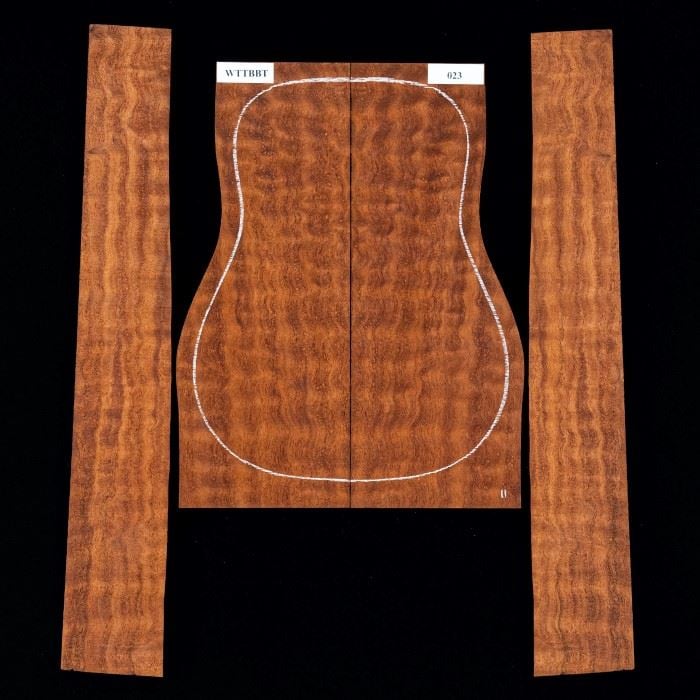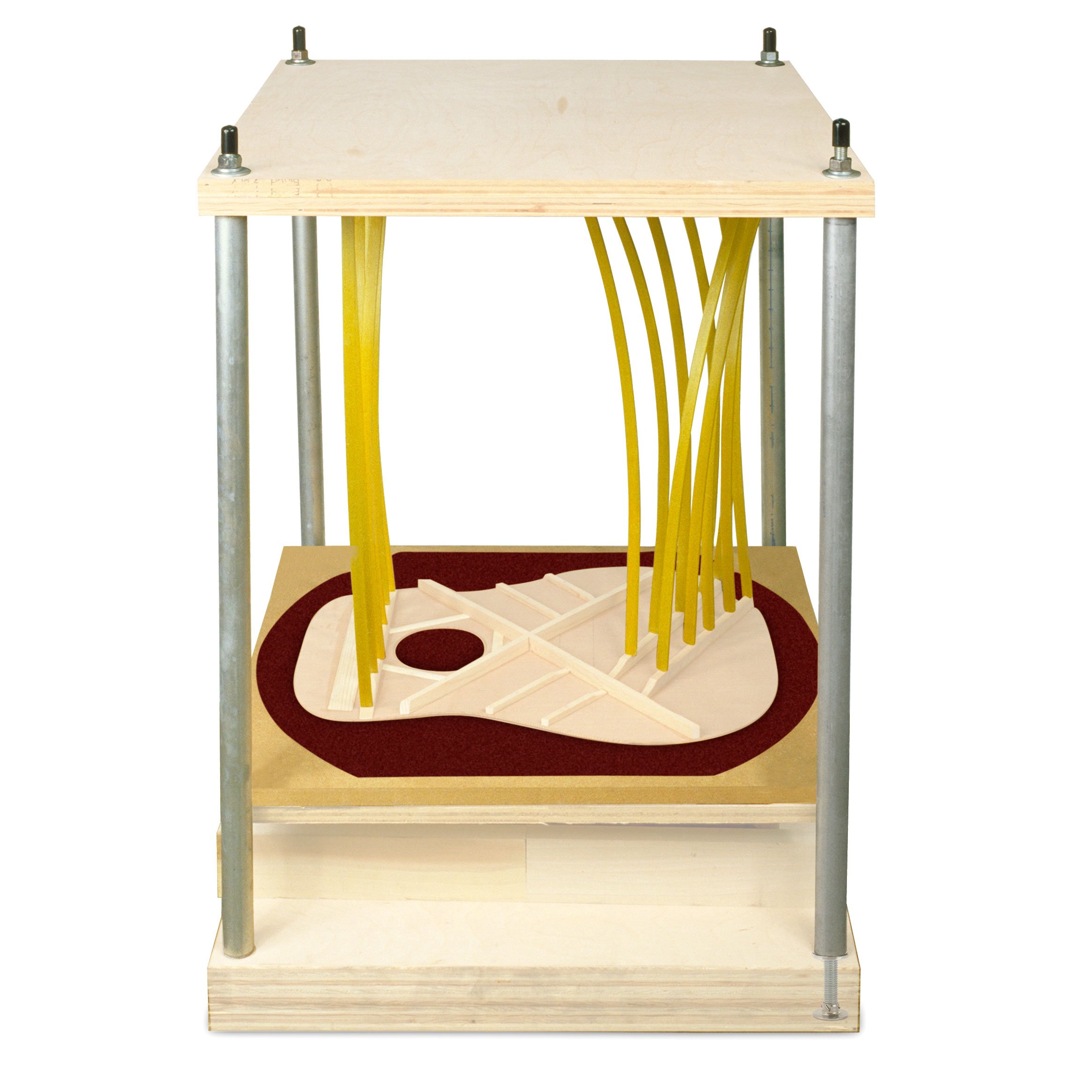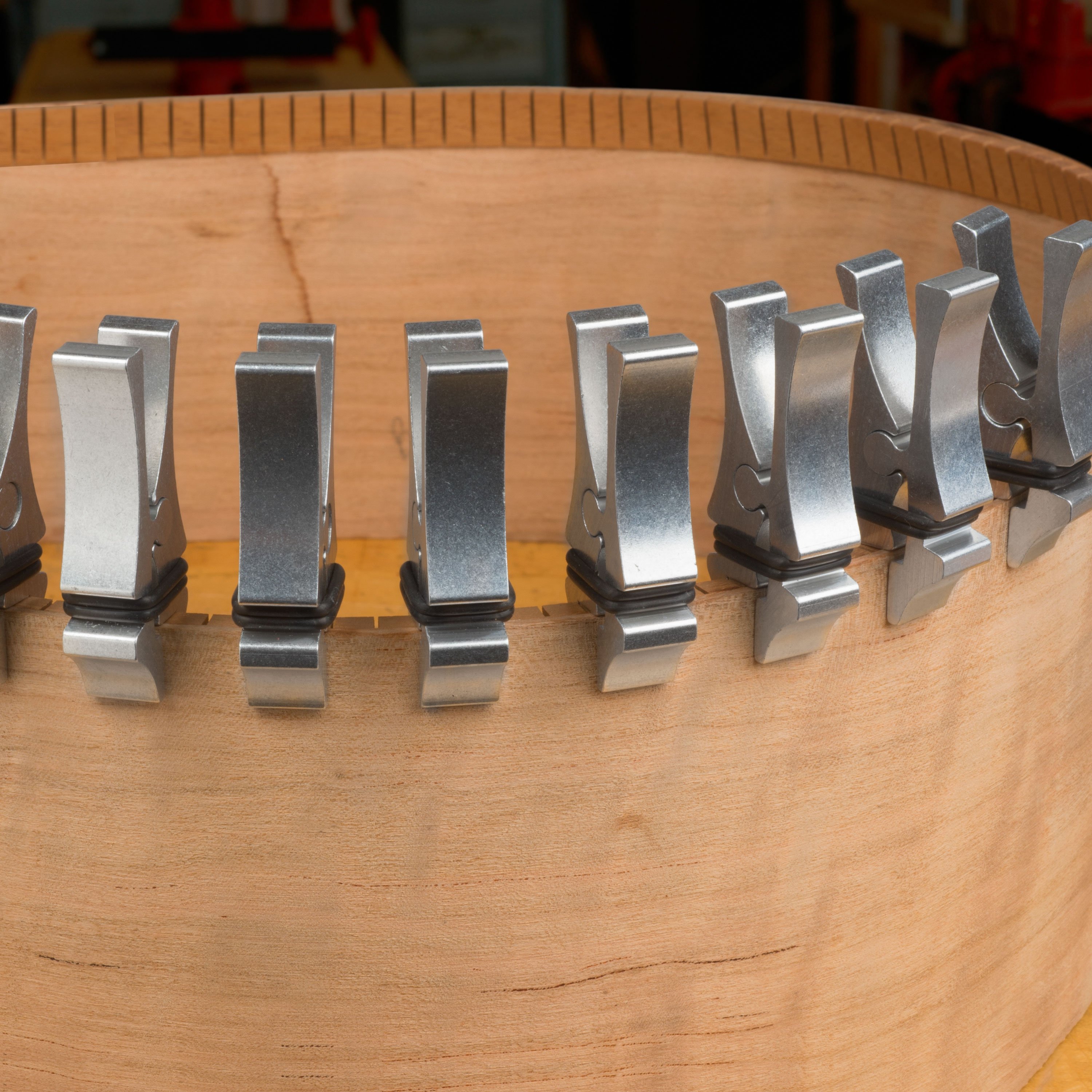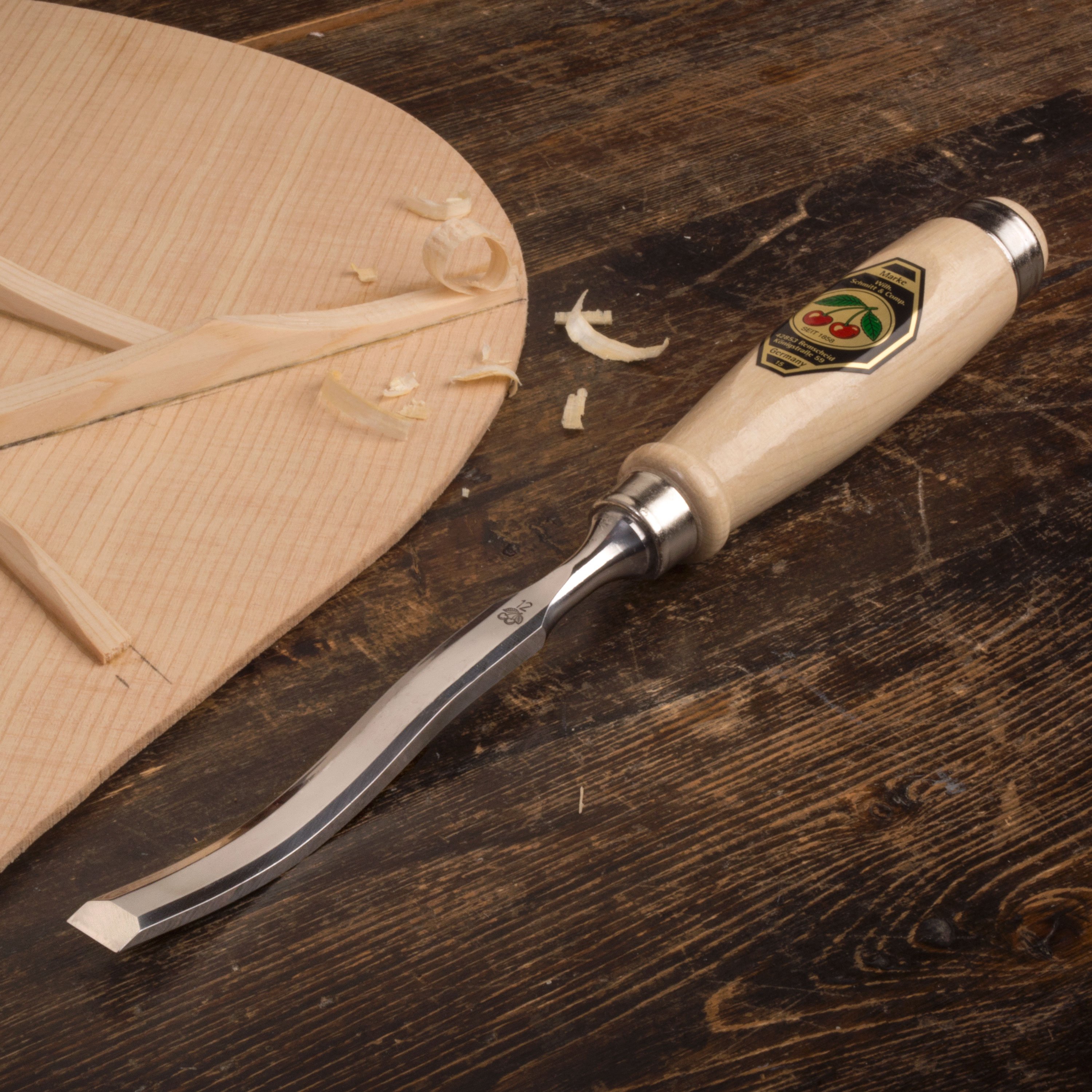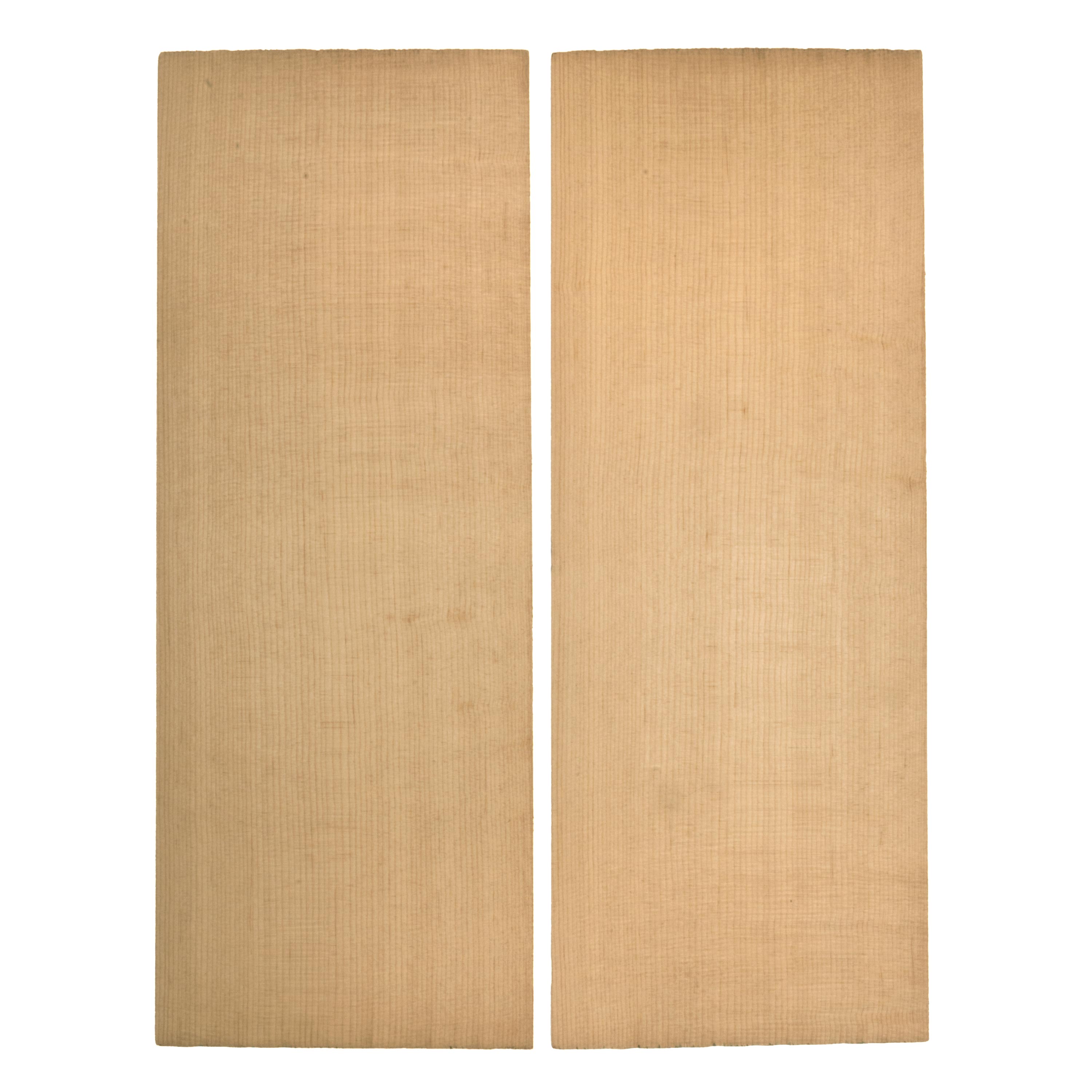The Tree: The Most Notorious Tonewood in the World
The discovery, the history, and the legend.
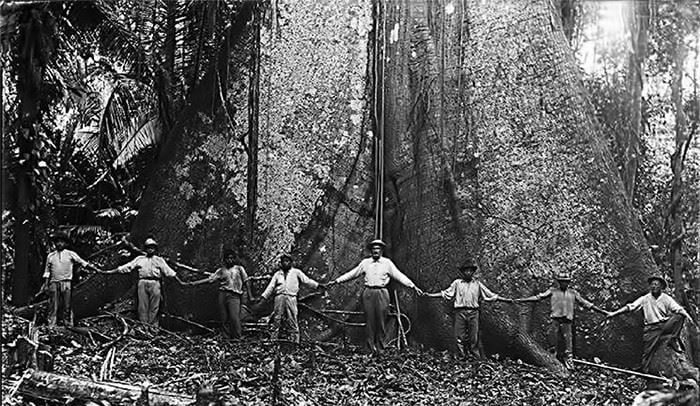
The original loggers standing in front of The Tree in 1965
Its look is unlike any other mahogany in the entire world.
Guitars made from The Tree routinely sell for $30,000-$40,000. It has been handpicked by famous musicians and rock stars for use in their personal instruments. Luthiers such as Robert Taylor, Michael Greenfield, Richard Hoover, Dana Bourgeois, and Ervin Somogyi have used it in their most prized builds.
But what is The Tree? What makes this single tree so extraordinary? Where did it come from and exactly how much of this wood is left?
Exhibition Grade Honduran Mahogany just added to WOODSTAX. |
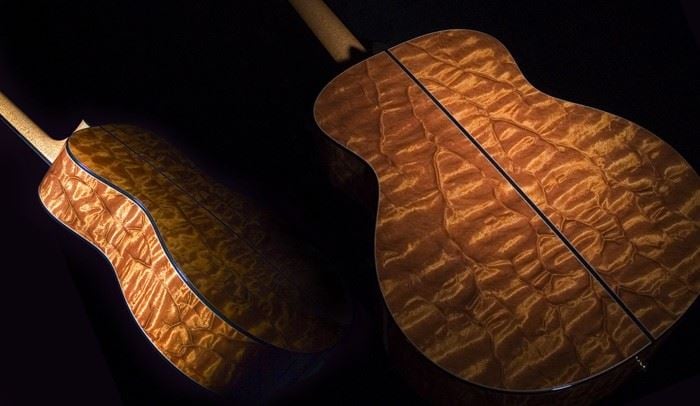
Acoustic guitar built by Robert Taylor, 2007
What is The Tree?
To understand The Tree's history we have to go back to 1965, when Belize was British Honduras...
Deep in the rainforest jungle of Chiquibul, a small party of loggers happened upon a towering mahogany. At over 100 feet high and 10 feet in diameter at the base, this tree was massive in every sense of the word. Best estimates would later place it at approximately 500 years old.
While felling an average sized tree can prove to be a formidable task—felling a tree wider than a bus must have required a great deal of bravery, a great deal of insanity, or an equal measure of both.
Whatever their state of mind at the time, the loggers vowed to complete their quest.
According to legend, and armed with nothing but their axes, the loggers began the long and arduous operation of chipping away at the base of The Tree. Fragment by fragment. Inch by inch. Weeks of manual labor in the sweltering, humid climate would have been required to prepare this tree for felling.
Then, finally, The Tree was ready to fall. The loggers' many years of experience had prepared them for this moment. With everything in order, the team was ready for the giant to come tumbling down.
It is at this point in the story, when the story and The Tree take an unexpected turn.
Instead of landing where intended, The Tree fell backward, coming to a rest at the bottom of a ravine—now impossible for the loggers to extract with their limited machinery.
An unfortunate twist of fate for this small team of loggers, this accident would, nevertheless, prove fortuitous for The Tree. With the unanticipated reverse dive delaying its departure from Honduras (now Belize), The Tree would later make a much grander entrance onto the world stage.
However, for the next 10 years, The Tree would call the forest floor its home.
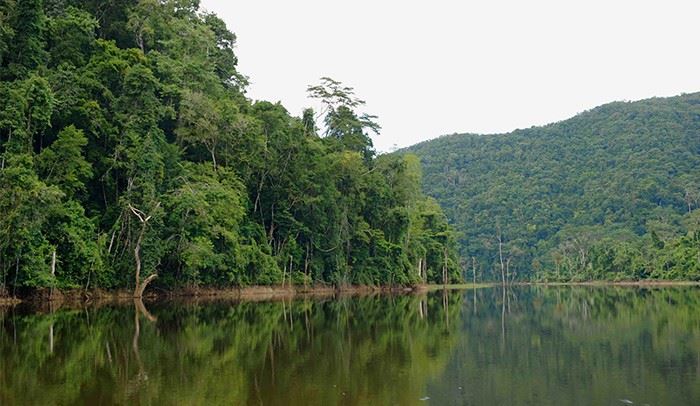
The Chiquibul forest, which lies within Belize’s Greater Mayan Mountains
Rediscovery of The Tree
Fast forward to the late '70s. Sawmill owner Alan Mauney stumbles upon The Tree in his search for timber, and subsequently mentions it to Robert Novak, an American specializing in the import of rosewood and other specialty woods.
For The Tree, this was two pieces of luck wrapped up into one. Novak happened to be in the region at the time, and had he not been there, it is likely The Tree never would have found its path out of Belize.
It is possible that it would have spent the rest of its days lying in the ravine—its incredible beauty never to be seen by the human eye and its untapped potential squandered away through a slow and unrelenting progression of rot and decay.
Fortunately, The Tree was to have a fate much more glamorous.
Although flooding prevented the two from visiting The Tree for a month, upon first sight Novak "recognized its significance almost immediately" [1]. His experience with other figured hardwoods led him to believe this specific tree could be quite unique. At the time, he would have had no idea just how unique The Tree truly was.
Novak purchased The Tree and then set about creating a plan to extract it from the ravine. Unforgiving terrain, The Tree's enormous weight, and wet conditions were just a few of the obstacles he had to overcome.
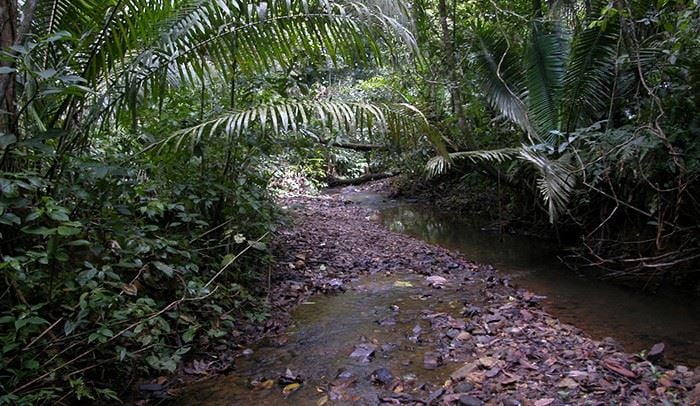
A jungle path through the Chiquibul
The decision was made to cut The Tree into quarters where it sat and then to cut those quarters to length. This would make hauling the timber out of the ravine a much more manageable ordeal.
They dragged the timber out of the ravine using a large tractor and placed them on trucks, three heavy sections at a time. The wood was then transported a perilous 100 miles through the heart of the jungle to the Chiquibul river.
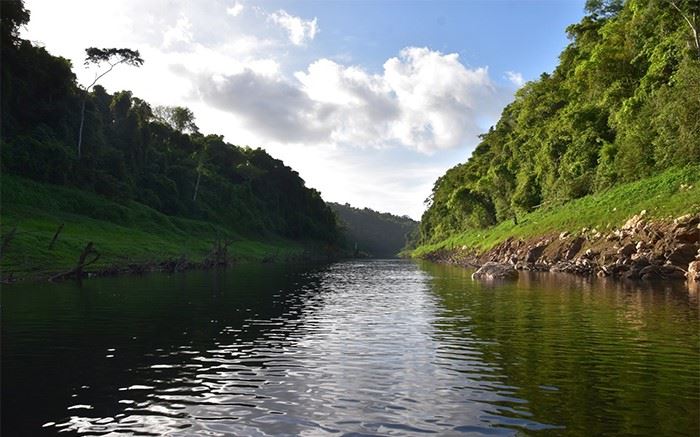
Modern day Chiquibul river
Once at the river, the logs had to be floated a final 70 miles downstream to an old, steam-powered sawmill [2].
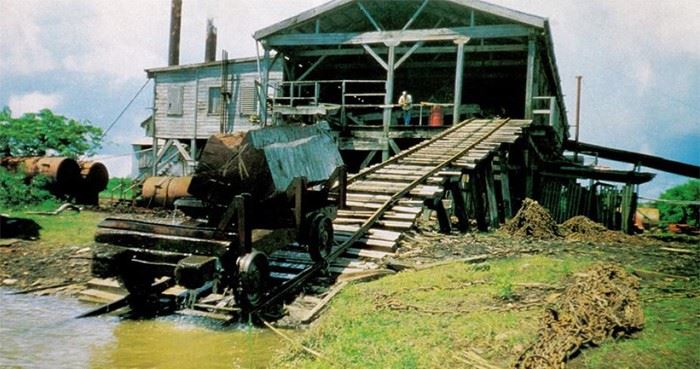
Steam powered sawmill with one-sixteenth of a section of The Tree
Novak supervised all of the processing, and was finally able to confirm his suspicions. This was certainly no ordinary tree. It had figure unlike anything he had ever seen. It was full of deep color, rich, swirling patterns, and it was also unusually dense.
To this day, Novak claims The Tree is some of the "prettiest wood he's ever seen" [3]. He is far from alone in that opinion.
The milling operation required nearly two weeks of work, yielding an astonishing 12,000 board feet of timber. The wood was then shipped to the United States and kiln dried for 30 days.
To the guitar building community, this tree would not become known as The Tree for another 10-15 years.
The Tree begins to take shape
In the '70s and '80s, mahogany was thought to produce a subpar tone when compared to that of rosewood—an assumption that would eventually change, thanks in no small part to The Tree.
Initially, much of the wood from The Tree was purchased by furniture makers and other craftsman, destined to become large conference tables, high-end cabinets and the like. It is rumored that George Lucas (creator of Star Wars) chose wood from The Tree to panel his San Francisco office.
It wasn't until the late '80s and early '90s when The Tree would see its first serious use in guitars, thanks to pioneering luthiers like Tom Ribbecke and Richard Hoover (owner of Santa Cruz guitars). These luthiers, and others, were crucial to popularizing The Tree within the guitar building community.
The Tree's transition from a tree to The Tree was just beginning to take shape.
"When I first saw the wood, I was impressed by its spectacular beauty," Ribbecke said. "The sound is warm and beautiful...[with a] bass response that is almost overwhelming." [4]
Although not normally a fan of mahogany tonewood, The Tree found another admirer in master inlay artist, and guitar maker, Harvey Leach. "I was immediately stunned by its beauty...and it sounded magical," Leach said. Tonally speaking, it was "nothing like mahogany but more like the very best [Brazilian] rosewood, with this astonishing clarity and bass response."
"I built two OMs at the same time", he recalled, "one with The Tree mahogany and the other with Brazilian rosewood. In the end, they actually sounded quite similar. But the guitar built from The Tree somehow sounded a little more like it was built from Brazilian rosewood than the one that actually was!" [5]
Leach has built 16 guitars from The Tree, and has stashed away a handful of guitar sets.
Exhibition Grade Honduran Mahogany just added to WOODSTAX. |
What makes The Tree so rare?
The Tree's figure (commonly called quilted, blistered, or tortoise shell) is thought to be caused by a genetic defect. In truth, the reason for its dramatic appearance remains largely a mystery.
While the cause of its beauty may be open for debate, the fact that it is beautiful certainly is not.
The look of The Tree is totally and utterly breathtaking—unbelievable depth of color often coupled with a large, undulating pattern of glistening waves and spider webbing.
"The Tree's dramatic figuring is classified in three main categories. One pattern resembles a tortoise shell, its triangular shapes having dark veiny outlines. Another is often referred to as a sausage quilt, as its wide horizontal patterns bear a resemblance to [sausage links], with rolling vertical lines that look like long, wavy tendrils. The third type of figuring is blistered, which, with its illusion of irregular curly shapes, is the wildest variation. While all three varieties are dazzling, the tortoise-shell pattern is most wildly coveted…" - Adam Perlmutter [6]
The tone of The Tree is unlike any other wood available. The Tree's density, response, and headroom rival that of the best Brazilian rosewood, and it has an open, ringing quality at first strum.
To date there have been no other trees found that compare to The Tree—in look and in tone, it truly is one of a kind.
How much wood is left from The Tree?
Wood from The Tree does not come up for sale often and commercial supplies are currently exhausted. When builders come across it, they tend to hold onto it zealously—leading to the supply shortage and high demand. By our estimate there are likely 100 to 200 sets of tonewood from The Tree remaining in the world. That is the bad news.
The good news is that we have found one last supply of this incredible tonewood, and it includes some of the most amazing figure we have ever seen!
When these few remaining sets are gone, they will be gone forever.
Our sets are priced in accordance with their rarity and figure. We take extra care with them to ensure the wood arrives in the safest and quickest possible manner—directly from our shop to your door. What you see in the photo is what will be delivered.
Hurry though, because once it has sold, this wood will never be available again.
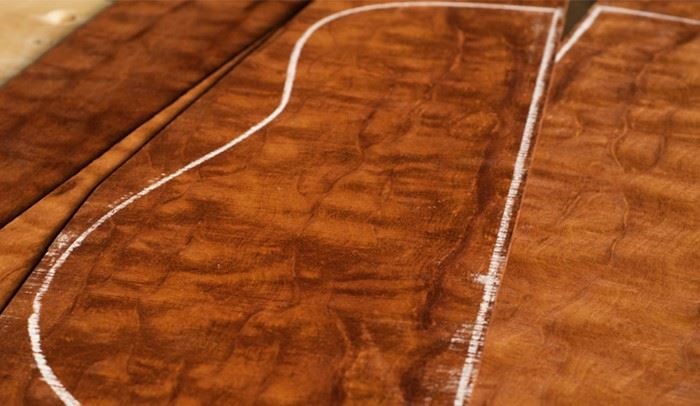
A limited quantity of The Tree is now available at StewMac. View WOODSTAX sets
Citations:
[1] Acoustic Magazine, "Wild Wood: The greatest mahogany ever?"
[2] October 1985 issue of Fine Woodworking, "Quilted Mahogany: The tale of a magnificent mutant" [3] August 2014 issue of Guitar Aficionado Magazine, "Tree of Life"
[4] August 2014 issue of Guitar Aficionado Magazine, "Tree of Life" [5] August 2014 issue of Guitar Aficionado Magazine, "Tree of Life"
[6] August 2014 issue of Guitar Aficionado Magazine, "Tree of Life"
Images:
(1) Mahogany loggers, 1965.
(2) Acoustic guitar built by Robert Taylor, 2007. (3) The Chiquibul forest. Belize Zoo Neotropical Conservancy, 2016.
(4) Jungle path through Chiquibul. Protected Areas Conservation Trust, 2017. (5) Chiquibul river. Crocodile Research Coalition, 2016
(6) Steam-powered sawmill with one-sixteenth of The Tree, Fine Woodworking. 1985, Robert Novak.
